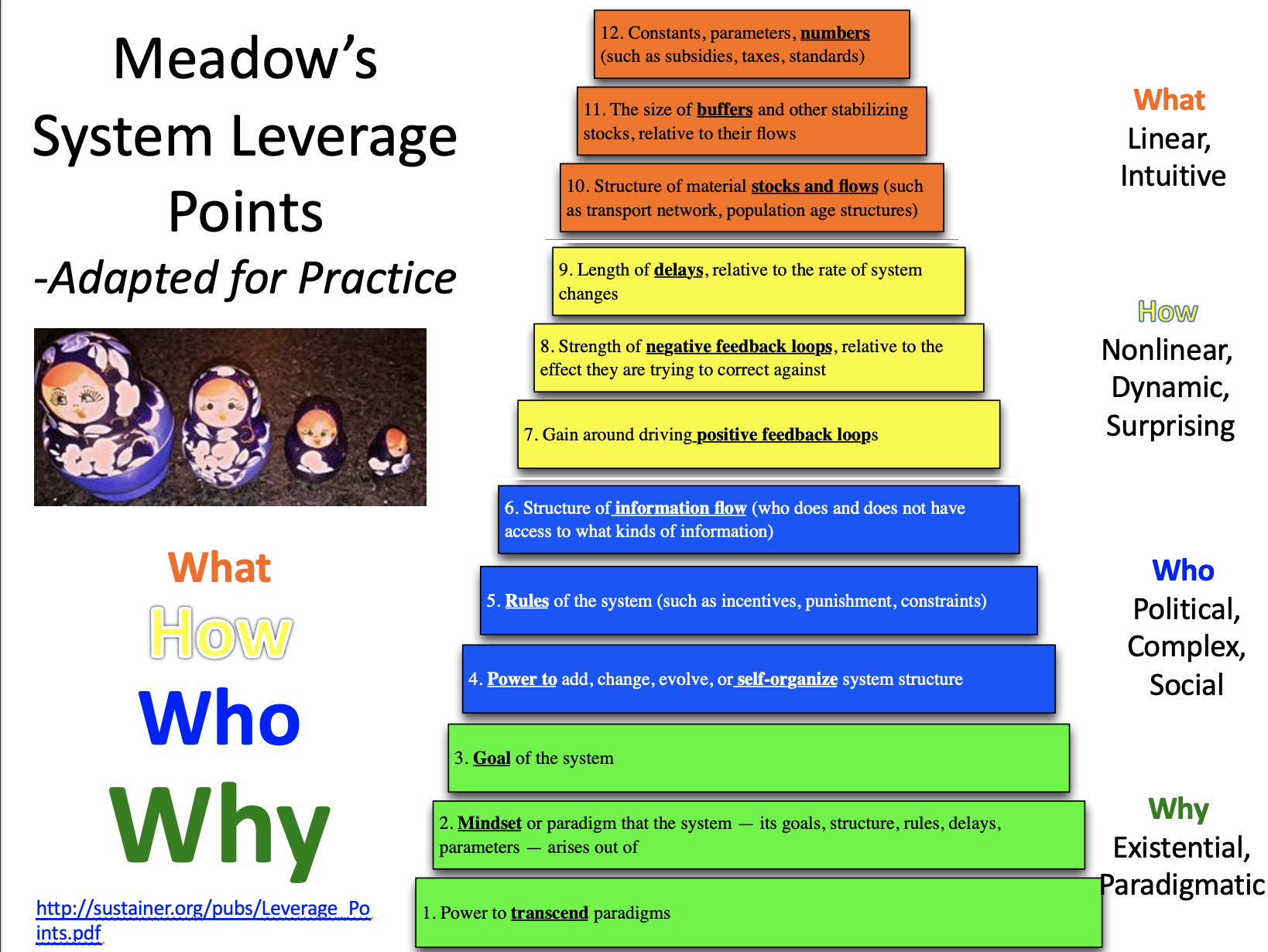Double click on image to expend. [http://marc.tries.fed.wiki/assets/Pierson-Meadows%20Slide.png source]
After puzzling over Donella Meadows' famous [http://donellameadows.org/archives/leverage-points-places-to-intervene-in-a-system/ Leverage Points paper] for more than a decade I distilled it to four powerful nested questions:
Why?
Who?
How?
What?

Click on [http://marc.tries.fed.wiki/assets/Pierson-Meadows%20Slide.png source] to open in a webpage.
While these questions are common enough, Meadows' insight was in distinguishing different levels of power-to-change-systems, particularly human complex systems. My modest addition is to explicitly state that the more powerful levels always provide necessary context for the less powerful levels.
Practically this means that one should always answer these four questions in the given order, inferred by Meadow's twelve leverage points.
Having answered these questions on must find ways to keep the answers in mind or at hand. It is this context setting that makes the order so important and that requires a recursiveness to all lower questions--always referring to the next higher question.
In my experience groups enjoy answering three of the four questions. With gentle facilitation they are able to keep to the sequence with the consequence that answers to lower questions are informed naturally by their answers to higher questions.
Four flip charts each labeled with one of the questions and placed in order is all that is needed to begin to benefit from Meadows' gift.
Admittedly the third question, How does it work?, can be tough and can require time and may require consulting special expertise.
Bonus: Even the top question, and Meadows' twelfth leverage point, allow a higher and more powerful question. I will leave that question to you, just as Meadows did.
.
In the last year I have realized that there are two superordenant questions missing. They are contextual and important: When?: Time (history) and Where?: Space (place).
I should add something on: Recursion Scale Complementary.
When Profit Taking becomes the dominant determinant of policy each of these questions are answered in the following destructive ways:
When—Ahistorical, atemporal decisions Where—Anti ecological decisions Why—Immoral decisions Who—Antisocial decisions How—Anti systemic decisions (certain to fail) What—Wasteful and error prone decisions
- public document at doc.anagora.org/four-nested-questions
- video call at meet.jit.si/four-nested-questions